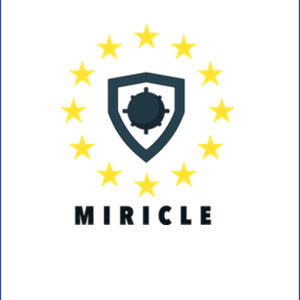 \
&
Contact us
\
&
Contact us
 \
&
Contact us
\
&
Contact us
Published on | 1 year ago
Programmes SemiconductorsThe Chips JU, tasked to implement part of the European Chips Initiative with funding from both Horizon Europe and Digital Europe, has published its first calls aiming at the launch of four innovative pilot lines.
A call for pilot lines includes three interrelated calls:
The same application is submitted to those calls and the evaluation will consist of the simultaneous evaluation of the interrelated calls.
The calls under Horizon Europe and Digital Europe have been published on the Funding & Tenders Portal:
Pilot line on advanced sub 2nm leading-edge system on chip technology
Pilot line on advanced Fully Depleted Silicon On Insulator technologies targeting 7nm
Pilot line on advanced Packaging and Heterogenous Integration
Pilot line on advanced semiconductor devices based on Wide Bandgap materials
We offer news and event updates, covering all domains and topics of Horizon Europe, Digital Europe & EDF (and occasionally, for ongoing projects, Horizon 2020).
Stay informed about what matters to you.
By signing up, you can opt in for e-mail notifications and get access to
a personalised dashboard that groups all news updates and event announcements in your domain(s).
Only for stakeholders located in Flanders
Health Culture and society Security Digital, Industry & Space
The open and forthcoming calls under Horizon Europe have been published on the Funding & Tenders Portal (Funding - Call for proposals) However, there are technical issues with the filter functions in Pillar 2: filtering per cluster does not display all 2025 call topics within this cluster and advertise call topics of other work programmes. The... read more

The Miricle project, ‘Mine Risk Clearance for Europe’, obtained funding under the European Defence Industrial Development programme call ‘Underwater control contributing to resilience at sea’. The main objective of the project was to achieve a European and sovereign capacity in future mine warfare and create a path for the next generation ‘made in Europe’ countermeasure solutions. In order to realise this objective, Miricle addressed various stages: studies, design, prototyping and testing. These stages inter alia included the successful testing of an XL Unmanned Underwater Vehicle, a protototyped mine disposal system and multiple innovative systems to detect buried mines. Flanders Marine Institute (VLIZ), was one of the five Belgian partners in the consortium. Within the project, VLIZ was able to forward its research on the acoustic imaging of the seabed to spatially map and visualize buried structures and objects - in this case buried mines - in the highest possible detail. VLIZ also led the work on ‘Port and Offshore Testing’, building on the expertise of the institute in the field of marine operations and technology.